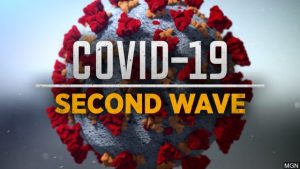Could a second wave be worse than the first? Read more…

If there is a second coronavirus wave, the severity of the outbreak would depend on multiple factors, including how well people maintain social distancing and how many people wear face masks. The widespread availability of tests might also play a role, in addition to contract tracing for anyone who tests positive.
For example, a study and computer model developed under Dr. De Kai, a computer scientist with appointments at both the University of California at Berkeley and Hong Kong University, proposes that if 80% of the population wore face masks in public, coronavirus transmission rates would plummet (PDF) to about 8% compared to wearing no masks.
Basically, the more measures there are in place to help reduce disease transmission — and the more effectively those measures are followed — the lower the infection rate may be the second time around, according to the computer model.
Other factors that could come into play are any potential genetic mutations in the coronavirus that could make it more or less transmissible, the development of an effective vaccine, the development of safe, effective treatments for the COVID-19 disease and the ability to test a large percentage of the population, even people who don’t appear to be sick.
Perhaps the most pressing questions of all are what a second wave of coronavirus might mean for you. Here’s how we think life will look after quarantine ends as the public braces for a second wave. If you do have to leave the house, here are some practical ways to stay safe when you go out. Finally, don’t unlearn all the good habits you’ve developed during the pandemic — like frequently washing your hands. (cnet.com)
